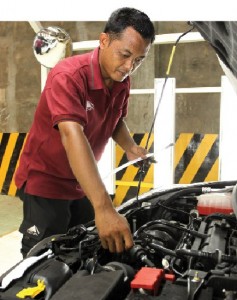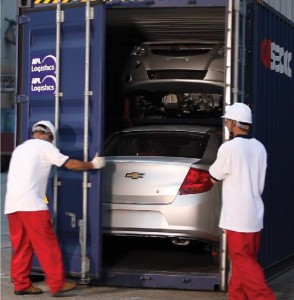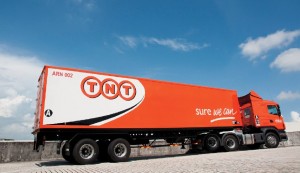 Southeast Asian countries are intensifying their logistics networks to accommodate growth in sales and exports
Southeast Asian countries are intensifying their logistics networks to accommodate growth in sales and exports
As automotive production rises in the Asia-Pacific region, Southeast Asia has emerged as a front-runner in assembly, export and sales growth in a number of markets. The ten-member Association of Southeast Asia Nations (ASEAN) is perhaps the most important trade bloc in Asia, representing a population of more than 600m across (from largest to smallest) Indonesia, the Philippines, Vietnam, Thailand, Myanmar, Malaysia, Cambodia, Laos, Singapore and Brunei. The average annual growth in vehicle production for the region is forecast to be about 8% over the next five years.
Regulations that mandate certain levels of local content and manufacturing are prevalent in the ASEAN region, making production and supply chain strutures more complex; Thailand currently has at least 16 joint venture automotive manufacturers, for example, while Indonesia, which produces fewer than half as many vehicles, has 20. However, plans to lower more trade barriers and add more free trade agreements could unlock potential within the ASEAN trade bloc, as well as with important neighbours such as China and India.
Despite this potential, the region suffers from an underdeveloped supply base in some countries, along with limits in infrastructure and poor IT communication. Logistics as a percentage of overall cost is high across ASEAN – more than 15% in Thailand and 13% in Indonesia – compared to Japan, for example (a country in which the region is competing for production volume). For example, Ilhami Arslanoglu, vice-president of automotive, Asia Pacific at DHL Customer Solutions and Innovation, points out that urban and rural areas are not connected sufficiently by road across the region. Thailand’s production is in the south, but serving the north means crossing hilly terrain. Congestion is also a big factor in Bangkok and Jakarta.

Thailand takes the lead
Thailand is the region’s automotive powerhouse, selling and producing more than 2.4m cars and commercial vehicles per year. Indonesian vehicle sales and production were expected to top 1.2m vehicles in 2013, while Malaysian sales were expected to rise 6% to more than 660,000 units, while its vehicle production could approach 600,000.
“During the past decade, Thailand became the production hub of Southeast Asia,” says Rinaldy Sudyatmiko, senior director automotive Asia and Europe at APL Logistics.
Toyota, Honda, General Motors have increased production across the region, particularly in Thailand, despite the disasters of 2011 and sporadic and severe flooding from July to October 2013. The country is also a significant export hub, especially for Japanese OEMs. Mitsubishi exported 230,000 vehicles from Thailand in 2012 (compared to 303,000 from Japan), with major flows to other Southeast Asian nations, but also to Europe, the Middle East, Australia and New Zealand.
Southeast Asia is an area vulnerable to extreme weather events, most recently seen in the devastating impact Typhoon Haiyan had on the central region of the Philippines when it hit land on November 8th last year. Automotive manufacturing and logistics was largely unaffected, being centred more than 500km to the north around Manila, but carmakers and logistics providers were quick to respond with humanitarian aid in the form of donations, the provision of vehicles and other resources.
Agility, Maersk, TNT Express and UPS were among those to offer warehousing, transport and logistics support to ensure that critical relief supplies reached those affected. All four companies make up the Logistics Emergency Teams (LETs), a cross-company partnership that supports humanitarian relief efforts during natural disasters.
While Thailand is currently king of sales and exports, DHL’s Ilhami Arslanoglu predicts that Indonesia will close the gap at least for sales, given the rising middling class in its population of 240m . “It will happen, but when is a bit uncertain,” he says.
Several new plants are planned in Indonesia, including Geely in 2015 and Volkswagen and Mitsubishi in 2017. Other manufacturers are expanding their capacity; GM reopened a plant in the country earlier this year, while Toyota is building a new engine plant to serve local and global vehicle assembly.
Thailand’s parts network
Third party logistics providers have built strong networks in the region, with Thailand again in the lead. TNT Express Worldwide provides storage, fulfilment, express shipping and just-in-time delivery of automotive parts in Thailand, and also has networks in Malaysia, Vietnam, and Singapore. Managing director Alan Miu says 30% of its transport is by road and 70% is by air, which reflects the strong demand for expedited services. TNT Express operates 14 nationwide depots, drop-points and hubs in major cities in Thailand.
Beside Thailand, TNT operates its own B747 all-cargo aircraft in Singapore, Shanghai, and Hong Kong, and a day-definite road transport service in Singapore, Malaysia, Thailand, Cambodia, Vietnam and southern China. In the past five years, TNT has invested more than €8m ($10.8m) in the development of road networks, according to Miu.
DHL provides inbound and aftermarket services in Indonesia, Thailand, and the Philippines, domestic aftermarket for most other countries as well as ocean and air transport. Arslanoglu says it was recently awarded a contract with a European truckmaker’s joint venture near Bangkok to handle inbound logistics at its plant, including receiving, storage, and packaging. Up to now it has been providing aftermarket transport for this manufacturer.
“A few months ago, we also acquired and expanded milkrun services for a major carmaker in Thailand,” adds Arslanoglu.
In Indonesia, DHL began handling inbound shipments from port to plant in 2012. For the aftermarket, it handles international shipments to local parts centres. “For example, for several German OEMs, we ship by air from Germany to regional facilities in Malaysia and Thailand. We also serve another European truck manufacturer from a distribution centre in Singapore,” explains Arslanoglu.
"To optimise automotive supply chains in Southeast Asia, we have integrated what used to be independently contracted and managed [networks] by facilitating standardisation of KPIs and service levels" - Robert Strain, Ceva Logistics
At Ceva Logistics, Robert Strain, vice-president automotive for Asia Pacific, says approximately 75% of its automotive business in Southeast Asia is managing contract logistics, including warehousing and distribution services. He adds that Ceva’s automotive network is the most developed in Thailand and is growing rapidly in Malaysia and Indonesia. Ceva also offers in-plant services, a range of aftermarket storage and distribution and vehicle logistics services, including PDI, yard management and delivery.
Rinaldy Sudyatmiko says that 80% of APL Logistics’ parts shipments in the region are for production and 20% are aftersales – mainly inbound milkruns from the supplier to the warehouse. Domestic shipments are 60% of its automotive business, which is primarily by truck, and international shipments account for 40%.
By deep sea, APL ships mostly from Thailand and also Singapore, Indonesia, Malaysia, the Philippines, and a small amount from Vietnam.
“Ford and Mitsubishi are our anchor customers in Thailand,” says Sudyatmiko. APL also provides warehousing, sequencing, and crossdocking via the port of Laem Chabang, south of Bangkok.

Nissan operates a global production hub at its plant in Bangna, near Bangkok, Thailand, which is the Japanese carmaker’s global source for pickup trucks. From Thailand, it exported around 120,000 finished vehicles to more than 100 countries in 2012; 20% of these exports were to Asia and Oceania. Nissan’s largest export destination from Thailand was Japan, followed by Australia and the Middle East, according to spokesman Shiro Nagai. Nissan also produces in Indonesia, Malaysia, Vietnam and the Philippines; most of the major markets are served domestically and the logistics process is not as sophisticated as markets such as Australia, Hong Kong, and Singapore, admits Nagai.
Nissan’s plants in Indonesia and Thailand are seeing strong demand for vehicle logistics services in the region. The carmaker hopes to sell 500,000 vehicles in ASEAN by 2016.
In 2013, volume fluctuations in the region have made it more difficult to secure transport capacity, Nagai says. Nissan expects upcoming ASEAN Economic Community regulation changes to have significant impacts on its logistics efficiency, allowing it to move goods more freely throughout the region.
APL Logistics began providing vehicle deliveries from OEMs to dealerships in Indonesia. Sudyatmiko points out that the country’s vehicle production is only in the Jakarta area in west-central Indonesia, but there is a lot of inter-island traffic; the situation is the same for the Philippines.
The company launched its Auto Direct Service in October 2012 using Trans-Rak International’s car racking system in 40ft sea containers, which hold four cars. The containers ship door-to-door from plants in the Jakarta area to eastern Indonesia. “We are just starting to see flows from Jakarta to Menado in north-central Indonesia. About 80% of our Trans-Rak vehicles go to Indonesia and the others move from Thailand to Malaysia by land,” says Sudyatmiko.
Within Southeast Asia, 70% of APL’s vehicle shipments move by water and 30% by land. This reflects the unique geography of the region, as the two largest countries by population, Indonesia and the Philippines, are each composed of thousands of islands. The provider currently ships finished vehicles in Trans-Rak containers to Thailand, Vietnam, Indonesia, and Laos. For the latter, it ships from the port of Yantai, China to Bangkok and then by truck to Vientiane, the capital and largest market in Laos. In 2014, APL plans to ship 4,000 units from Malaysia to Thailand.
Network integration and trade policy
Ceva’s Robert Strain says there is a trend to integrate supply networks more in Southeast Asia. Thailand has the most complex and developed supplier footprint, he says. Indonesia and Malaysia, although highly regulated on local content, depend on imported content, and are expected to use more material from other ASEAN countries following further free trade agreements.
Aftersales logistics in Southeast Asia is also quickly moving toward an integrated model, with few or no single country models. Strain says that finished vehicle logistics networks are the last bastion to integrate, thanks largely to their dependency on government oversight. For example, the use of haulaway equipment varies from country to country and may be affected by governmental regulations.
“In order to optimise automotive supply chains in Southeast Asia, we have integrated what used to be independently contracted and managed [networks] by facilitating standardisation of KPIs and service levels,” says Strain.
Sudyatmiko says APL Logistics has been integrating its automotive services within Southeast Asia with respect to seamless door-to-door service, including customs clearance and last mile delivery. It is working more in the customs clearance area and finding options for maintaining good service levels. “For example, if a customer wants more domestic tier one suppliers, we try to set up milkruns,” says Sudyatmiko.
“However, the region has a long way to go. Thailand has a strategy, but Indonesia is a distant second because it imports many parts. The number of suppliers there are one-third to one-fourth the number in Thailand. We need more physical integration as well as information technology,” he explains.
Indonesia may eventually emerge as the region’s primary market, which would further change ASEAN logistics networks. Indonesia has recently benefitted from inflows of investment, with Honda, Volkswagen, Suzuki, and GM building new plants and others, such as Nissan and Toyota, expanding their capacity. Sudyatmiko says the main challenge is infrastructure, since road capacity is limited. Jakarta’s port handling capability is also an issue since it is very congested.
TNT Express’s Alan Miu points to other difficulties besides infrastructure, including high customs fees, particularly in Thailand. As a means to address issues such as high customs fees, the ASEAN Economic Community (AEC) is the most comprehensive effort to drive trade integration for the region. Strain says this is a positive development for the logistics sector and provides opportunities for Ceva to develop cross-border services.
"Protectionism is reducing Malaysia’s long-term competitiveness,” Dr. Javad Feizabadi, Malaysia Institute for Supply Chain Innovation
Malaysia poised to advance
Perhaps the most complex regulatory environment is currently Malaysia’s, which experts say has been a big drag on the country’s supply chain potential. Although Malaysia hosts 11 vehicle assemblers, the industry is highly protected, with domestic Produa and Proton brands capturing 30.1% and 22.5% of the market share, respectively. Malaysia has eliminated most tariffs for ASEAN countries, but high excise duties and taxes on cars and components restrict foreign manufacturers, and make production in the country among the most expensive worldwide.
“Protectionism is reducing Malaysia’s long-term competitiveness,” says Dr. Javad Feizabadi, assistant professor, director of academic research at the Malaysia Institute for Supply Chain Innovation.
Malaysia’s logistics costs represent 13.6% of total sales, which is lower than Thailand but still relatively expensive. High taxes and duties drive costs higher. Feizabadi points out that with full implementation of the ASEAN Economic Community (AEC) in 2015, many inter-country tariffs will be eliminated, however, enabling opportunities for logistics efficiency improvements. Malaysia’s implementation of free trade agreements with Australia, New Zealand, Chile, and Japan should also bolster its automotive trade, he says.
Feizabadi says that Malaysia expects to expand its role as an export hub for serving neighbouring countries such as Indonesia and China. The import market is also likely to grow as Malaysia’s government brings the industry in line with its ASEAN counterparts, but it will struggle to retain some protective measures.
“By opening up the AEC, the automotive supply chain will become longer, which implies higher supply chain costs for transportation and storage costs, although production costs are likely to decrease due to a larger scale of production and larger pool of potential car buyers,” says Feizbadi.

As its logistics infrastructure develops, Malaysia’s role as a transhipment hub is also growing, thanks to the country’s location. In 2012, transhipment accounted for 22.5% of its total sea cargo throughput.
The road and inland waterway sectors play a major role in Malaysia’s logistics network, while rail offers a freight connection between Malaysia and Thailand. However, Feizabadi says that, even with its multimodal transport options, Malaysia’s logistics system is weak, inefficient and fragmented. Port congestion is a major problem even before an expected rise in trade.
“The main challenge for Malaysia’s automotive supply chain after AEC implementation is to increase the importance of time and place value for the customer; delivery efficiency will become one of the main concerns of the market,” he says.
Looking further ahead
Another country that is on the rise is Vietnam, which has a low-cost production base and is expected to reach 50% growth by 2018. The country’s underdeveloped supply chain has restricted vehicle production growth, although a slow turnaround is taking place with investment from major brands such as Bosch and Akebono Brake. Malaysian Tan Chong Motor Group recently opened a plant in Da Nang.
The Philippines receives a relatively small vehicle volume, which may make it difficult to justify another plant, but on the positive side, the country is expected to reach 50% growth by 2018 (although the long-term impact of the recent, devasting typhoon is uncertain).
Perhaps one of the more surprising developments has been in Burma, known officially as Myanmar. Nissan is building the country’s first car plant for $75m. APL Logistics also ships a small quantity of 500 cars from Thailand, while Ford has opened dealerships in the country. These developments signal a slow opening of the country to the outside world. With Myanmar opening up, there is also an opportunity to link Malaysia and Thailand to India and China by road. Sudyatmiko says that although Thailand has a head start here, Malaysia could also expand its export markets and supply base, particularly for serving Indonesia.
The diversity of countries in Southeast Asia has played a strong role in determining automotive logistics networks, even if there is now a push to connect these services better, but taxes and regulation drive costs higher. With upcoming changes designed to foster trade competitiveness, as well as a push to improve infrastructure and logistics services, the countries have opportunities to develop more competitive supply chains as a group.
Additional reporting by Marcus Williams

























![Global[1]](https://d3n5uof8vony13.cloudfront.net/Pictures/web/a/d/s/global1_726550.svgz)









